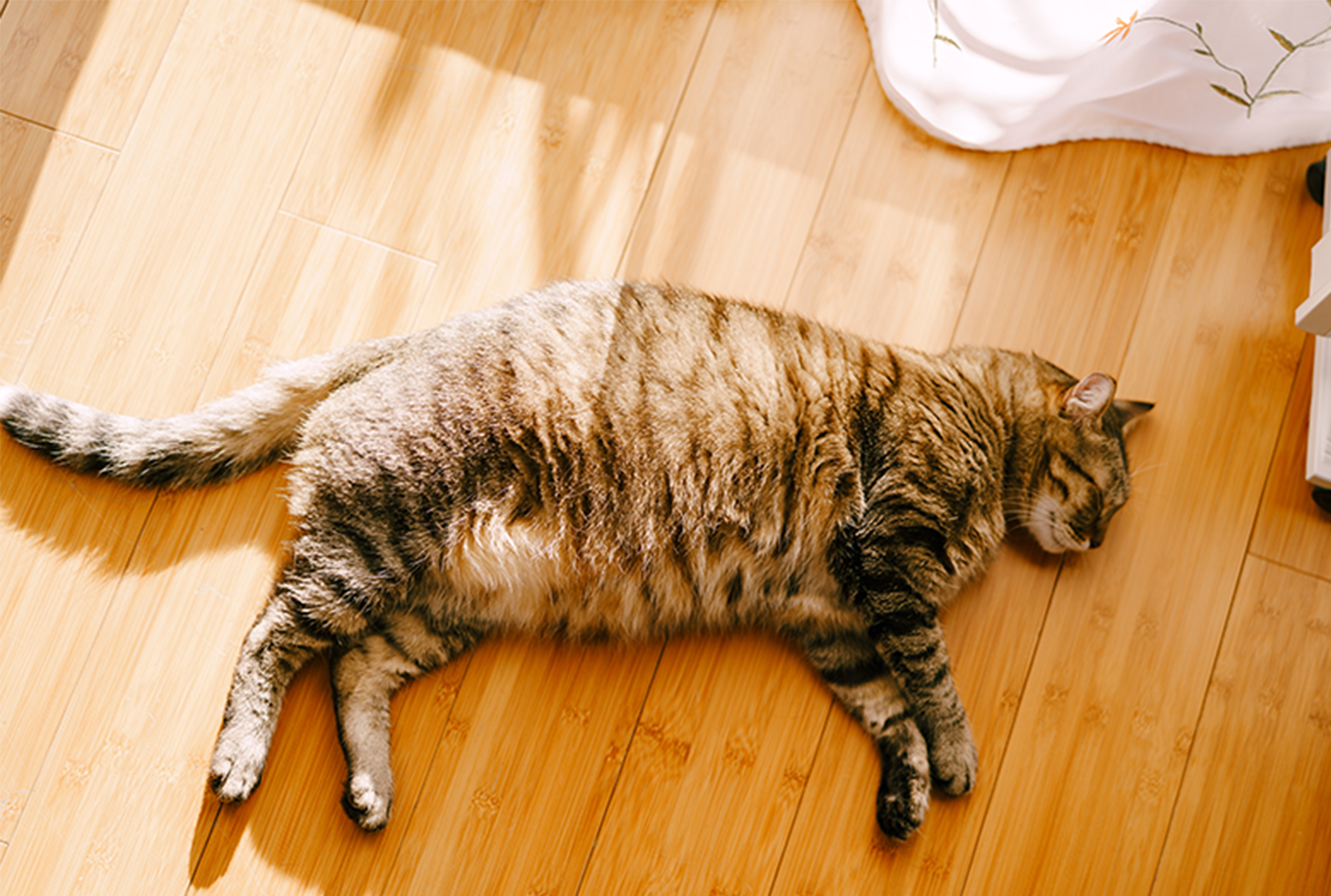Who doesn’t love a cuddly cat every once a while? But there might be something more sinister under all your cat’s squish: if they feel much too big, they might be overweight or even obese. There are dangers to such a condition, so be sure to know the signs of obesity in your feline friends so as to prevent them from getting too overweight!
Is my cat overweight?
Overweight cats are generally identified as cats that are more than 15% over their ideal body weight, while obese cats are more than 30% over their ideal weight.
There are a few ways to check to see if your cat is at a healthy weight. One such way is to stroke their body, feeling their ribs. You should be able to feel a healthy cat’s rib cage easily, the padding between your palm and their ribs no more than the padding at the back of your hand. If you need to press firmly to be able to feel their ribs, it could be because of the extra fat surrounding their body and thus, they might be overweight. If you can’t feel their ribs at all, they could possibly be obese.
Another way is to look down at your cat while they’re standing. They should have a slight indentation just about their hips like a waist. If their sides jut out instead, it’s a sign that they’re gaining weight.

Photo by colorful19 on Freepik.com.
Risks of obesity
Being overweight can affect your cat in many ways. They might stop engaging in normal cat activities like playing and grooming, which might develop further problems in terms of personal hygiene. The risk of getting weight-related illnesses like diabetes and arthritis is also higher, making their lives miserable.
A possible reason for their obesity could be due to overeating when they feel stressed or unhappiness, so noticing signs of negative feelings in your cat can help to spot and prevent obesity in your fur friend!

Photo by satura86 on Freepik.com.
How to help your cat lose weight
The first step to take would be to bring your feline pal to a vet for further check-ups. They’ll also be able to assign the appropriate feeding and exercise regime for your cat to make sure they lose weight in a healthy manner! Losing too much weight at once might cause hepatic lipidosis, a liver disease that occurs when fat is deposited in the liver as a result of a change in metabolism during fasting.
With the recommended feeding from your vet, you can begin to control their food intake, measuring out food that helps with their weight so as to ensure a healthy and steady weight loss. Remember to not drastically cut down their food!
You should also get your cat into exercising, ensuring at least two 15-minutes playtime every day. Though runs and walks aren’t a cat’s cup of tea, running about the house and leaping on cat towers are already a good workout for them! And of course, using cat toys to play with them is also a great way for them to keep moving about and not stay still.

Photo by freepik on Freepik.com.
How to prevent obesity in your cat
However, prevention is always better than cure. To make sure your cat stays at their optimal weight, weigh out their food to control how much they eat and keep them active, even if they’re indoor cats. Similar to humans, if they laze around too long with no exercise, they’re bound to put on weight easily!
Be sure to check their weight constantly as well, as gradual weight gain might be hard to spot if they’re constantly around.

Photo by odua on Freepik.com.
Even though the sight of a pudgy cat waddling about is cute, the effects of such obesity is not. It’s always best to be safe than sorry when it comes to your feline pal’s health and body!
References:
https://www.cats.org.uk/help-and-advice/diet/cat-obesity
https://icatcare.org/advice/obesity-in-cats/
https://www.hillspet.com/cat-care/healthcare/is-my-cat-overweight








